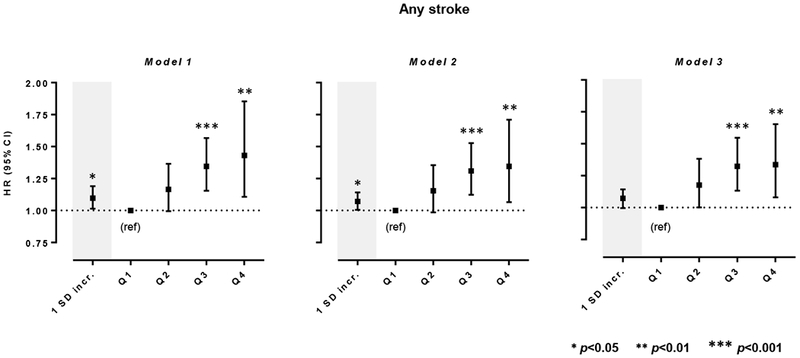Figure 2.

Associations between baseline circulating MCP-1 levels and risk of any stroke. Shown are the results from random-effects meta-analyses of the pooled sample consisting of six population-based studies.Model 1 is adjusted for age, sex, and race. Model 2 is adjusted for age, sex, race, and vascular risk factors including body mass index (1 kg/m2 increment), smoking (current vs. non-current), estimated glomerular filtration rate (1 mL/min/1.73 m2 increment), history of coronary artery disease, diabetes mellitus, hypercholesterolemia, hypertension, atrial fibrillation, and heart failure at baseline. Model 3 is additionally adjusted for circulating high-sensitivity C-reactive protein (hsCRP) levels.
Analyses for 1 SD increment correspond to ln-transformed MCP-1 levels.
